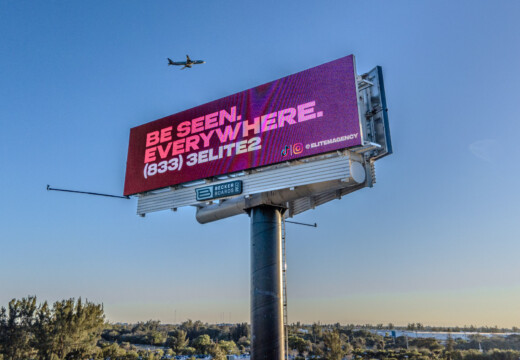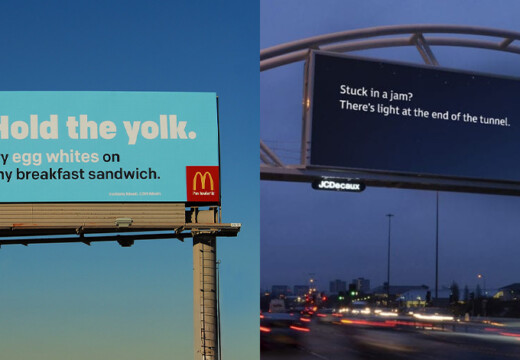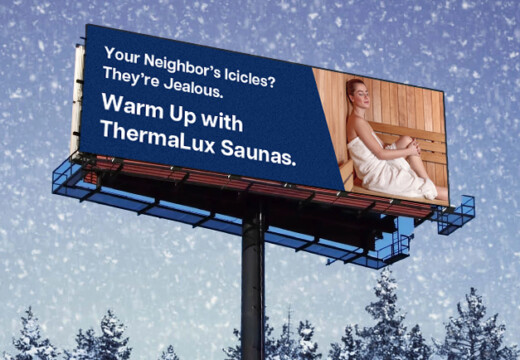Thinking about putting your brand on a highway billboard? You’re not alone. With drivers spending over an hour on the road each day, it’s easy to see why these towering ads are so appealing. But before you drop thousands of dollars on a traditional highway placement, there’s something you should know.
Highway billboard advertising cost can run anywhere from a few thousand to well over $50,000 per month – and that doesn’t include production or long-term contracts.
The good news? You don’t need to spend big to get seen. Platforms like Blip Billboards give you real-time access to digital highway ads with no contracts and flexible pricing. If you’re trying to get the visibility of a highway billboard without blowing your budget, this guide will show you how to make smart, cost-effective choices that still get results.
Key Takeaways
- Highway billboard advertising costs range from $1,500 to over $50,000 per month, depending on format, location, and duration.
- Visibility, speed limits, and placement impact cost more than raw traffic volume alone.
- Traditional billboards offer lower monthly costs and full exclusivity but lack real-time flexibility.
- Digital billboards provide up to 400% more views and 83% recall, with lower entry costs via shared time slots.
- Small businesses can benefit from campaign timing, geographic targeting, and Blip’s flexible, no-commitment model that lets you scale budgets on your terms.
- Advanced cost-saving techniques include long-term bundling, off-peak booking, and performance-based rate negotiation.
- Start testing your creative on digital highway billboards today with Blip’s no-contract, self-serve platform.
Real Highway Billboard Costs
Let’s cut through the confusion with actual numbers:
| Billboard Type | Typical Monthly Cost Range | Typical Weekly Cost | Contract Required | Flexibility | Best For |
| Traditional Static | $1,500-$15,000+ | $375-$3,750+ | Yes | Low | Long-term branding in fixed locations |
| Traditional Digital Billboard | $2,500-$25,000+ | $625-$6,250+ | Yes | Medium | Rotating ads and dayparted content |
| Blip Digital Billboards | $150-$1,000+ | $35-$350+ | No | High | Small budgets, short-term or flexible campaigns |
The national average sits at $3,953 for a four-week campaign, but smart advertisers know that averages tell only part of the story.
Hidden Factors That Drive Highway Billboard Pricing
Highway billboard pricing is influenced by much more than just traffic volume. Variables like visibility, speed limits, and even placement on the road can dramatically affect cost and campaign performance. Below are the most important factors that shape pricing – and why higher traffic doesn’t always mean better value.
Traffic Volume vs. Visibility
A billboard along I-95 may get 200,000 daily impressions, but that doesn’t guarantee it costs more than one on Route 66 with 150,000 daily impressions.
Clear visibility, angle of approach, and lack of visual obstructions often matter more than traffic counts alone. When drivers have longer, unobstructed views of your message, recall rates improve, even with fewer cars passing by.
The Speed Factor
Speed limits directly affect viewing time and impact:
- 55-65 mph zones typically offer six to eight seconds of viewing time, considered ideal for billboard ads.
- 70+ mph zones often come with reduced effectiveness and pricing discounts of up to 20%.
- Congested traffic zones can carry premium pricing due to longer dwell time and repeated exposure.
Understanding the flow of traffic and average driving speed in your desired location can help you make a more strategic and cost-effective buy.
Right-Side Premium
Billboards placed on the right-hand side of the road consistently command 10-25% higher rates. This is due to natural driver and passenger eye movement patterns, which make right-side ads easier to read and remember. For advertisers targeting commuters or families, this added visibility can significantly increase campaign value.
Digital vs. Traditional: Comparing ROI for Highway Billboards
Let’s find out how traditional billboards compare to digital billboards in terms of generating revenue when placed along a highway.
Traditional Billboards
Traditional highway billboards continue to deliver strong returns, especially for long-term brand campaigns. These static placements typically come with lower monthly fees and provide complete ad exclusivity for the duration of your contract.
Viewer recall remains solid, with studies indicating a 65% retention rate. This consistency makes them appealing for businesses prioritizing visibility without frequent content changes.
Production and Installation Costs
The total cost of traditional formats goes beyond the rental fee. Creative design and printing usually range from $500 to $2,500. Installation adds another $500 to $3,000, depending on materials, structure type, and access. Once your campaign ends, removal costs typically fall between $200 and $500.
Performance and Recall
Traditional boards offer constant visibility to drivers, delivering uninterrupted exposure. However, they lack adaptability and require lead time for any creative change. If you need to update messaging mid-campaign, it often means a full reprint and reinstallation.
Digital Billboards
Digital highway billboards offer a more dynamic and flexible approach. These high-impact screens attract up to 400% more views than static formats and achieve an 83% recall rate. They are ideal for timely campaigns that respond to daily changes, special offers, or traffic patterns.
Real-Time Flexibility
One of the biggest advantages is the ability to update content instantly. Businesses can adjust messaging for weather, time of day, or special events. This real-time control improves campaign agility and creative testing without additional costs.
Cost-Effective Rotation Spots
While digital placements often have a higher base rental, they eliminate printing and installation costs entirely. Shared slots significantly lower the price, with some campaigns starting at just $300 per month. Blip Billboards pushes this accessibility even further with contract-free options and the flexibility to start, pause, and scale campaigns on your own terms.
ROI Potential
Digital formats offer strong visibility, measurable data, and the ability to test multiple creatives without long production cycles. For businesses with dynamic promotions or short-term campaigns, they often deliver higher return on investment with less operational friction.
Maximizing Your Highway Billboard ROI
To get real value from highway billboard advertising, every second counts. Most drivers only have about seven seconds to absorb your message. That makes billboard design and placement absolutely critical.
The most effective campaigns follow a clear, proven formula: a bold headline of no more than two to six words, one dominant visual element, a clear call-to-action, and a logo placed in the lower corner for brand recall.
In terms of calls-to-action, these should be as simple as possible. Drivers only have a few seconds to take in highway billboards, which means that long phone numbers or website URLs are not good fits. Only very simple and rare vanity phone numbers, as well as easy-to-read URLs should be considered.
Design That Works at Highway Speed
Billboards aren’t print ads. They need to communicate in motion. Use high-contrast color schemes and simple fonts that are legible at a distance.
Avoid clutter or multiple images. Instead, focus on one core message. If you’re promoting a physical location, include directional cues like “Exit 42” or “Next Right.” QR codes may work in urban areas with slower speeds, but they’re generally not effective on highways.
The Power of Strategic Placement
Location isn’t just about traffic volume – it’s about visibility and proximity to customer action. Billboards placed one to two miles before a highway exit often generate triple the engagement compared to those positioned just after the exit.
For service businesses, timing matters just as much.
Morning rush hour accounts for about 40% of daily impressions on major routes, making early-day exposure a valuable buy. On recreational corridors, Friday afternoons through Sunday evenings yield peak performance, with rates adjusted accordingly.
Find out more about budgeting for billboards in our detailed guide.
Small Business Highway Billboard Strategies
You don’t need a national budget to run a high-impact campaign. With the right approach, small and local businesses can compete effectively and drive measurable results.
Campaign Timing Tactics
Short-term, targeted runs often outperform long-term placements for local promotions. Consider these options:
- Weekend-Only Campaigns: Ideal for retail, restaurants, and service businesses that rely on Saturday and Sunday foot traffic
- Rush Hour Blocks: Focus spending on the times when your target audience is on the road
- Holiday Weekend Blasts: Reach travelers during long weekends or seasonal migration
- Event-Driven Ads: Time your campaign around local events, sports games, or community festivals
Each of these formats allows you to control cost while maximizing exposure during peak activity windows.
Location Arbitrage Opportunities
One of the most overlooked cost-saving strategies is geographic offsetting. Billboards located just outside urban centers often come at half the price of those within city limits.
Yet, they still reach the same drivers commuting into town. If your business draws from a regional area, placing your ads along feeder routes can deliver impressive ROI without paying downtown premiums.
Digital Rotation and Shared Slots
Digital highway billboards have completely reshaped the economics of outdoor advertising. Instead of renting the space 24/7, you can pay for specific time slots and rotate your ad with others. These shared placements put your message on premium boards at a fraction of the cost.
Blip Billboards pioneered this model with pricing that gives small businesses the ability to advertise on the same highways as national brands. The platform provides full control over timing, budget, and creative, delivering highway exposure without long-term commitments or high-risk spending.
Industry-Specific Highway Billboard Performance
Different industries see varying returns from highway billboard investments. Let’s provide you with an overview of what a Blip Billboard can do for you.
- Restaurants within five miles of their billboard typically experience a 22% average sales lift
- Hotels and lodging businesses report 31% booking increases when using exit-specific messaging
- Service stations displaying current gas prices see 18% traffic increases
- Attorneys using memorable phone numbers experience 250% call volume jumps
- Cannabis dispensaries report 45% increases in first-time visitors
- Urgent care centers triple patient volume by displaying current wait times
- Storage facilities boost occupancy by 28% when advertising monthly rates.
Advanced Cost-Saving Techniques
Highway billboard advertising doesn’t have to drain your marketing budget. With the right approach, you can reduce your costs by 40% or more while still securing premium placements. Below are several advanced strategies that experienced advertisers use to cut expenses without compromising reach or impact.
Smart Negotiation and Bundling
Billboard vendors often offer tiered discounts for bulk placements. Booking multiple locations at once can reduce your per-board cost by 15% to 30%.
Long-term contracts are another reliable way to unlock savings. Advertisers willing to commit for six to twelve months frequently save between 20% and 40% compared to short-term runs.
Timing matters as well. Off-peak booking windows, typically between November and February, tend to be less competitive. Vendors are more willing to negotiate during these periods, allowing you to secure better locations at reduced rates.
Production Cost Optimization
Production costs can add up quickly, especially when creative is redesigned for each campaign. To keep expenses in check, consider these tips:
- Use Durable Materials: Vinyl banners last up to three times longer than paper posters, making them ideal for extended campaigns.
- Create Evergreen Designs: Develop ad creatives that can be reused across multiple campaigns or locations with minimal changes.
- Time Your Installations: Scheduling your installation during the billboard provider’s slower periods may reduce labor charges or setup fees.
These tactics not only reduce production costs but also increase the long-term value of your creative assets.
Using Data to Strengthen Negotiations
Digital billboards equipped with real-time analytics can be a powerful negotiation tool. These platforms track hourly impressions, dwell times, and visibility based on weather or time of day. Some even provide competitive ad presence monitoring.
Rather than relying on outdated impression estimates, ask for performance data directly from the vendor. Use this information to challenge pricing or push for better placement at the same rate. If you can demonstrate that a location underperforms relative to others in the same zone, you may be able to negotiate a rate adjustment or bonus placement.
Blip’s digital platform gives you access to this kind of data without needing to negotiate manually. Real-time reporting, location analytics, and impression-based billing let you see exactly what you’re getting for your budget – and make fast, informed adjustments on the fly.
Saving Money With Self-Serve Digital Platforms
One of the most effective ways to reduce highway billboard advertising costs is by using self-serve platforms like Blip.
Unlike traditional providers that often require large minimum spends and long-term commitments, Blip gives you the freedom to advertise without contracts or upfront commitments. This flexible model makes billboard advertising accessible to businesses of all sizes, paired with a user-friendly interface that makes creating and launching digital billboards quick and painless.
This flexibility not only prevents wasted spend but also lets you scale campaigns up or down instantly based on performance. By avoiding hefty upfront contracts and only paying for the impressions you want, advertisers can stretch budgets further while still accessing premium digital billboard inventory.
Making the Highway Billboard Decision
Highway billboards can deliver massive reach, but they’re not right for every business. Before investing, it’s important to match the format with your marketing goals, location, and audience profile. Below, we outline the types of businesses that benefit most from highway billboards, as well as situations where this medium may fall short.
When Highway Billboards Make Sense
Highway advertising is ideal for brands that need broad reach and consistent visibility across large geographic areas. Businesses that see the best return typically:
- Target daily commuters and long-distance drivers
- Draw customers from a 10+ mile radius
- Sell impulse-friendly products or services
- Need to build top-of-mind brand awareness fast
- Have short, memorable calls to action
- Operate near highway exits or major interchanges
Common examples include fast food chains, urgent care clinics, car dealerships, personal injury attorneys, and event venues. These businesses can generate strong visibility with minimal text and a single offer or phone number. In many cases, adding a highway billboard leads to traffic increases of 20% to 40%, especially when timed with sales or service promotions.
The Ideal Billboard Use Case
The sweet spot for highway billboard success lies with local businesses that offer broadly relevant services and operate within five miles of a high-traffic exit.
Restaurants promoting weekday lunch specials, healthcare providers advertising walk-in appointments, or seasonal retailers announcing limited-time offers are all prime examples. These brands benefit from impulse-driven responses and repeated brand exposure over time.
Your Next Move With Highway Billboard Advertising
Highway billboards can deliver real visibility, but you don’t have to spend five figures to get results. From traditional static signs to dynamic digital campaigns, the key is matching the right format to your goals.
Digital billboards like those from Blip offer unmatched flexibility, allowing you to start small, test often, and scale only when it works.
You’re no longer locked into long contracts or stuck paying for impressions you can’t measure. With smart design, strategic placement, and a cost-effective rotation model, your message can compete with national brands for just a few dollars per day.
Start testing your highway billboard campaign with Blip today – real exposure with full flexibility, no contracts, and the ability to scale on your terms.
Frequently Asked Questions
What is the Most Cost-Effective Time to Book a Highway Billboard?
Booking during off-peak months like November through February typically yields the best rates. Vendors often offer discounts during these slower seasons, allowing you to secure prime locations at reduced prices and negotiate more favorable terms.
Can I Change My Billboard Message After it Goes Live?
With digital billboards, yes. Platforms like Blip allow you to upload, edit, or rotate your creative in real-time without incurring reprinting or installation costs. This flexibility is ideal for flash sales, local events, or weather-triggered promotions.
How Long Should a Billboard Campaign Last?
Short-term campaigns (1-4 weeks) can work well for events or limited offers, while long-term campaigns (3-12 months) are better for brand-building. Digital platforms allow you to test both and optimize based on real performance data.
How Do I Know if My Billboard is Working?
Use platforms that offer real-time analytics. Blip provides impression data, location stats, and time-based reporting so you can track performance and adjust campaigns based on actual results – not guesswork.
What Types of Businesses Benefit Most From Highway Billboards?
Restaurants, attorneys, urgent care clinics, hotels, and service businesses near major exits tend to see the best ROI. These businesses thrive on brand visibility, impulse traffic, and simple, direct messaging.
Sources
- How Much Does a Billboard Cost? (+ Pricing & Ad Tips for 2025)
- Billboard-Safety-Study-Compendium-10-16-2020.pdf
- Digital Billboards vs. Traditional Billboards – Impact Group Marketing College Station, Texas > Resources > Blog
- Out-of Home-Advertising Enters a New Era for Restaurants – QSR Magazine
- Calculate your Hotel Occupancy Rate – SiteMinder


